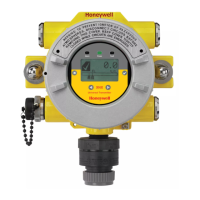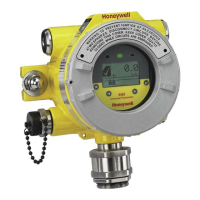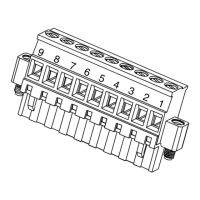98
Sensorsshouldbecalibratedatconcentrations
representativeofthosetobemeasured�Itisalways
recommendedthatthesensorbecalibratedwiththetarget
gasitistodetect�
Caution: Responsibilityforidentifyingandrecordingasensorcalibration
madewithadifferentgasrestswiththeuser.Refertolocalregulationswhere
appropriate.
Ensurethatthesensorandthevicinityarounditisclearof
alltracesofthecalibrationgasbeforecontinuing�Thisisto
avoidtriggeringspuriousalarms�
Ifcalibrationfailsatanypoint,discardthecartridgeand
replaceitwithanewone(seeSection4�1)�
7�Removethetestequipment,rettheweatherproofcapto
thesensor(ifpreviouslyremovedforthetest),andreturn
thesystemtonormaloperation�
3.2.9 MPD Flammable Sensor Operational Life
Thepellistorsusedinammablegassensorscansuffer
fromalossofsensitivitywheninthepresenceofpoisonsor
inhibitors,e�g�,silicones,suldes,chlorine,lead,orhalogenated
hydrocarbons�Thepellistorsarepoisonresistanttomaximizethe
operationallifeoftheammablesensor�Thetypicaloperatinglife
ofthepellistorsensorusedintheMPD-CB1is60months�
3.2.10 XNX EC Sensor Operational Life
Thetypicallifeofatoxicgassensordependstontheapplication,
frequency,andamountofgasexposure�Undernormalconditions
(3monthvisualinspectionand6monthtest/recalibration)thetoxic
sensorhasanexpectedlifeequaltoorgreaterthantheselifetimes:
• 12monthsforammonia,hydrogenchloride,andhydrogen
uoridesensors(seefurtherammoniainformationbelow)�
• 24monthsforchlorinedioxide,oxygen,andothertoxic
sensors�
SeeSection4-Maintenanceforsensorreplacementprocedures�
Caution: Oxygendeficientatmospheres(lessthan6%V/V)mayresultin
inaccuratereadingsandperformance.
Ammoniaelectrochemicalcellsarereliableandsuitablefor
applicationswherenobackgroundconcentrationofammoniaexists�
Undertheseconditionsthecellsareexpectedtooperatefor12to24
months�
Theseammoniacellsareoftheconsumptivetype�Theiroperating
lifecanbeadverselyaffectedbycontinuousorexcessiveexposure
toammonia,orbyprolongedexposuretohightemperaturesand
moisture�
Toensurecontinueddetectionavailability,bumptestthesensors
regularlyandimplementanappropriatecellreplacementprogram�

